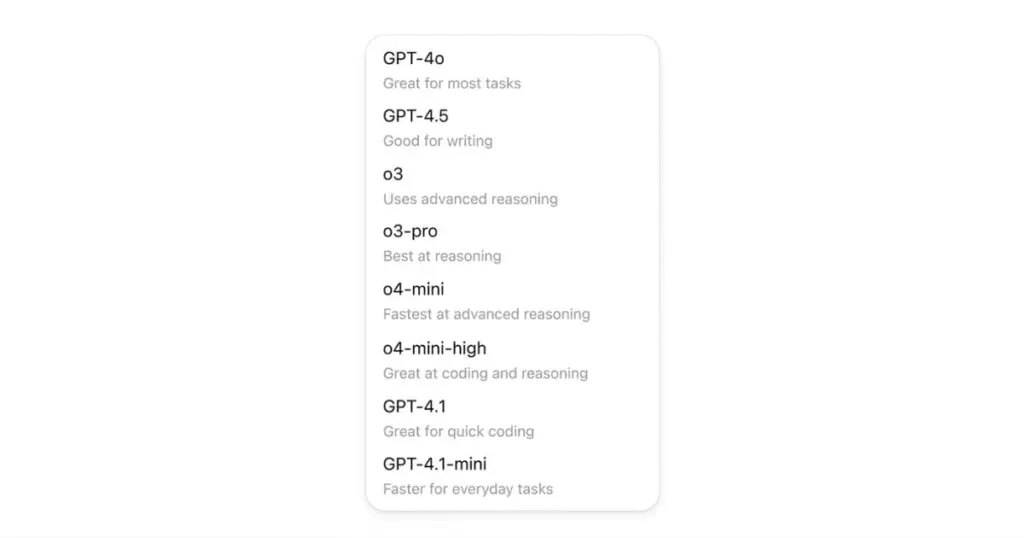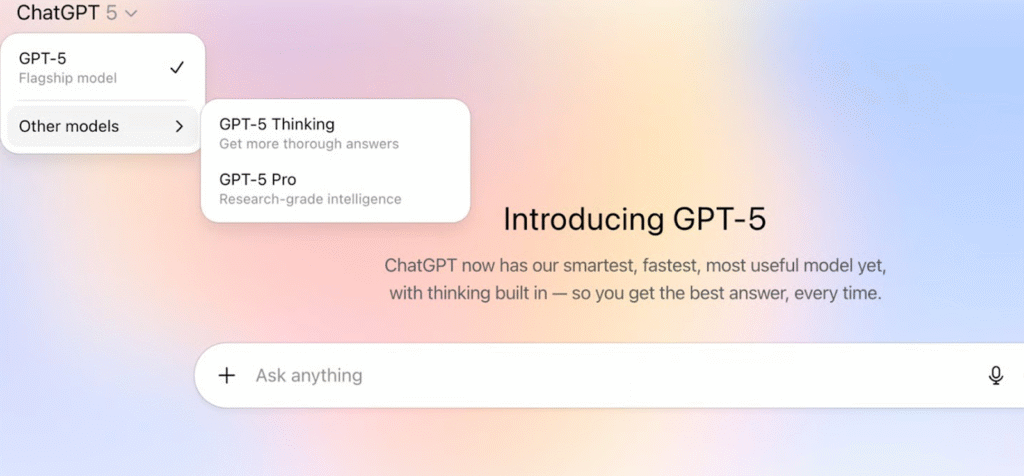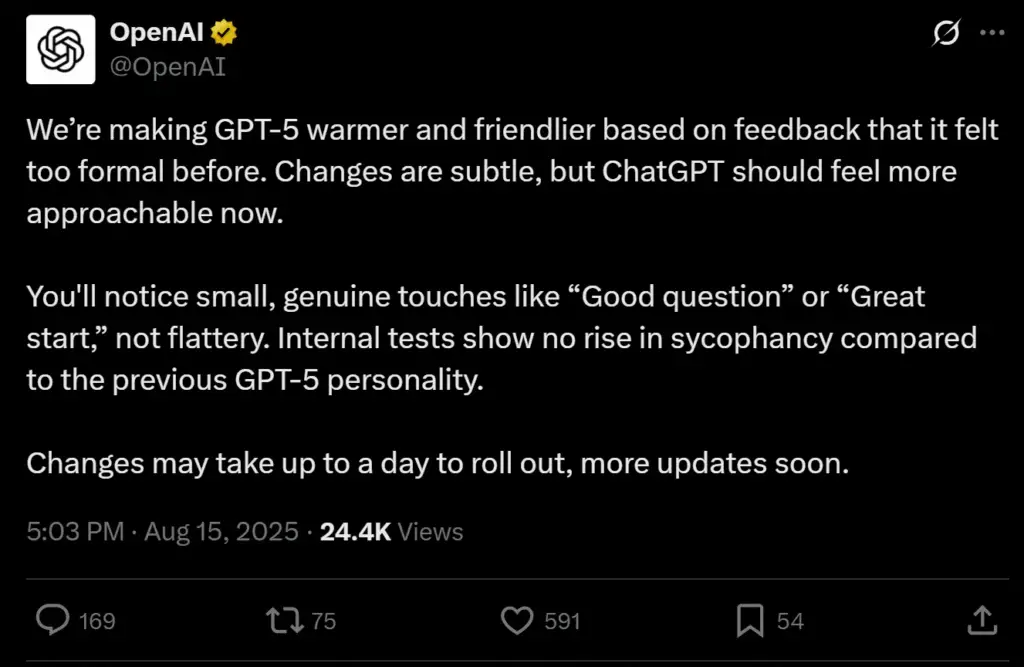OpenAI has been moving at lightning speed in 2025, and ChatGPT users just got a fresh wave of updates that make the platform smarter, faster, and more adaptable than ever. Following the official release of GPT-5, OpenAI has rolled out a series of improvements across ChatGPT for individual subscribers, enterprise clients, and even education users.
These updates not only expand access to advanced models but also refine user experience with smarter tools, warmer interactions, and deeper integrations into daily life.
Here’s a detailed breakdown of the 7 biggest ChatGPT updates this week—and what they mean for everyday users, professionals, and organizations.
1. GPT-4o Now Classified as a Legacy Model

One of the most noticeable changes for paid users is the way GPT-4o is being handled.
- GPT-4o is now listed under “Legacy Models” in the ChatGPT app by default.
- Users who preferred its style and conversational flow can now easily access it without searching through hidden menus.
- This comes after OpenAI briefly removed GPT-4o, only to bring it back following widespread demand.
For long-time ChatGPT users, this is a relief. Many found GPT-4o’s responses familiar, consistent, and in some cases, better suited for specific tasks. By keeping it available under the legacy section, OpenAI ensures stability for those who aren’t ready to jump entirely into GPT-5.
2. More Models Available via “Show Additional Models”
OpenAI is expanding flexibility for paid subscribers with a new toggle in settings: “Show additional models.”
This option unlocks access to specialized versions beyond the default ones, including:
- o3 – Optimized for lightweight processing.
- GPT-4.1 – A refinement of GPT-4 with improved stability.
- GPT-5 Thinking mini – A smaller, more efficient variant of GPT-5 Thinking.
This empowers power users to choose models based on their exact needs:
- Need quick, lightweight answers? Use o3.
- Want balance and stability? GPT-4.1 has you covered.
- Curious about deep reasoning but don’t need the full power of GPT-5 Thinking? Mini is now an option.
This granular control reflects OpenAI’s recognition that not all users need the same processing power all the time.
3. GPT-5 Now Offers Auto, Fast, and Thinking Modes

The headline update this week is the mode selection feature for GPT-5.
Previously, users had just one version of GPT-5. Now, there are three modes tailored to different use cases:
- Fast Mode – Prioritizes speed, giving quick answers with minimal delay. Ideal for casual queries, brainstorming, or when you just need information fast.
- Thinking Mode – Slower but more powerful. Designed for complex problem-solving, structured answers, and in-depth reasoning. Perfect for research, coding, or business tasks.
- Auto Mode – A smart hybrid. Automatically switches between Fast and Thinking depending on the complexity of your request, offering the best balance without requiring manual input.
This is a game-changer for productivity. Instead of manually deciding whether speed or depth matters more, Auto Mode optimizes response style in real time.
4. Expanded Capacity for GPT-5 Thinking
One limitation users quickly ran into with GPT-5 was message caps—especially on GPT-5 Thinking, the most advanced reasoning variant.
OpenAI has now increased capacity:
- Plus and Team subscribers get up to 3,000 messages per week on GPT-5 Thinking.
- After hitting that limit, access doesn’t stop. Instead, users are automatically switched to GPT-5 Thinking mini, ensuring continuity.
This expansion makes GPT-5 Thinking far more practical for heavy users such as developers, researchers, consultants, and academics who rely on longer reasoning chains and structured answers.
5. GPT-5 Expands to Enterprise and Education Users

Until recently, GPT-5 was restricted to Plus and Pro individual subscribers. That exclusivity has now ended.
- Enterprise clients – Companies can now integrate GPT-5 into their workflows, boosting productivity with advanced reasoning and faster problem-solving.
- Education institutions – Universities, schools, and educators can provide students access to GPT-5, giving them a more capable AI assistant for research, learning, and assignments.
This expansion significantly broadens GPT-5’s impact. Instead of being a premium perk for individuals, it now becomes a professional and academic tool across organizations.
6. Gmail and Google Calendar Integration
Perhaps the most practical update for daily users is the integration of Gmail and Google Calendar.
- ChatGPT can now pull data from your inbox and calendar.
- It can draft email responses, summarize threads, and remind you of upcoming meetings or deadlines.
- It also creates personalized summaries of your calendar, helping you manage time better.
This makes ChatGPT more of a personal assistant than ever before—one that doesn’t just answer questions, but actively integrates into your productivity ecosystem.
Imagine asking: “What’s on my schedule tomorrow, and can you draft a polite reply to John’s email about the presentation?” ChatGPT can now handle both tasks seamlessly.
7. GPT-5 Gets Warmer and Friendlier
One of the biggest criticisms of early GPT-5 was that it sounded too stiff and formal. While accurate and professional, many users felt it lacked the warmth and natural flow of human conversation.
OpenAI has addressed this by rolling out personality tweaks:
- Responses are now warmer, friendlier, and more conversational.
- The AI maintains professionalism but feels less robotic.
- Importantly, OpenAI stresses that these changes don’t make the model artificially flattering or appeasing—it’s still factual and helpful, just more human-like.
This adjustment is being rolled out gradually and will continue to evolve based on feedback. For everyday users, it makes interactions more comfortable and natural.
What These Updates Mean for You
The latest wave of updates reflects OpenAI’s dual priorities: user experience and scalability across industries.
- For Casual Users: More natural conversations, faster responses, and deeper integrations make ChatGPT easier to use in daily life.
- For Power Users: Flexible model selection and expanded capacity ensure better performance for advanced tasks.
- For Organizations: Enterprise and education access means GPT-5 can now transform workflows, collaboration, and learning environments.
Looking Ahead: What’s Next for ChatGPT?
Beyond these seven updates, there are hints of more features on the horizon:
- A ChatGPT Go plan reportedly priced around $4/month for lighter users.
- Voice speed improvements for smoother AI conversations.
- More integrations with third-party platforms and apps.
OpenAI is clearly moving toward making ChatGPT not just a chatbot, but a comprehensive AI assistant embedded into work, school, and personal life.
Final Thoughts
The top 7 ChatGPT updates this week mark one of the biggest leaps forward since the release of GPT-5. From mode selection and expanded capacity to Gmail integration and a friendlier personality, OpenAI is reshaping how users interact with AI.
Whether you’re an individual looking for quick answers, a professional handling complex reasoning, or an organization seeking productivity gains, these updates promise a more adaptive, capable, and human-like AI experience.
In short: ChatGPT just became faster, smarter, and friendlier—and this is only the beginning.

